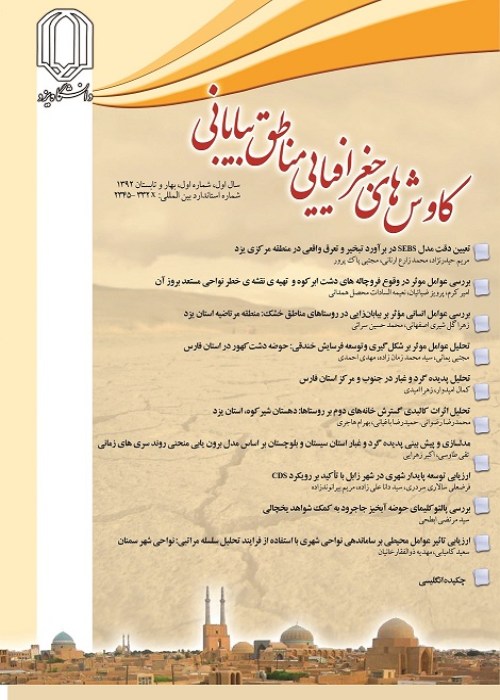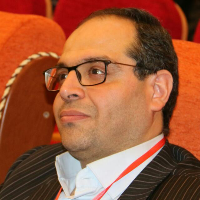Comparative assessment of the sustainable livability in urban neighborhoods: A case study of the neighborhood of the oil company staff and Sadatshahr in the city of Dogonbadan
Dogonbadan City is located in Gachsaran County in the southern part of Kohgiluyeh and Boyer-Ahmad Province. Since the beginning of oil extraction, this region has been divided into two different residential areas in terms of living conditions. One area belonged to the employees of the Oil and Gas Company and the other was the residence of the natives of the region. In this division and accommodation, the employees of the oil company, while provided with all kinds of free services, were accommodated on flat fields and wide streets built according to international standards (as it is still the case). On the other hand, the natives of the region were settled on the hills near the city of Dogonbadan for unknown reasons, which denotes a kind of spatial injustice in the city. According to some studies, it seems that there is a relationship between the physical-environmental components, livelihood-economic base and social base of the citizens on one hand and the livability of the neighborhoods on the other hand. This study intends to pathologically examine the most important components affecting the promotion of urban livability by emphasizing the physical, spatial, social and cultural dimensions. Finally, solutions are provided to reduce the spatial injustice and improve the livability of the neighborhoods.
The present study is of an applied descriptive-analytical type. The statistical population consisted of the residents of Sadat neighborhoods (old texture) and the employees of the oil company (new texture) in Dogonbadan. The Cochran method was used to estimate the sample size, and 200 respondents were selected through random sampling. The respondents were the heads of households, owners, investors, officials and city managers in Dogonbadan. The data required for the research were evaluated through the SPSS and AMOS software programs.
According to the results, the situation in the neighborhoods of Dogonbadan is unfavorable in all the components of livability. For instance, in the economic dimension, the Kruskal-Wallis test showed the low satisfaction of the citizens in Sadat neighborhood with an average of 1.87 as compared to the higher level of satisfaction of the oil company neighborhood with an average of 4.01. In the socio-cultural dimension, the results of the Kruskal-Wallis test show a significant difference at the level of 99% in terms of the component of urban education and citizenship; the neighborhood of the oil company with an average of 4.3 stood in the first rank, and Sadat neighborhood of Dogonbadan with the average of 2.41 took the next position. In the physical-environmental dimension, to measure the quality of the environment and the physicality of the city, 12 components were used in this field. The results showed a significant difference of up to 95% for some components. In fact, there was a huge difference in the physical-environmental dimension between the selected neighborhoods, and the obtained averages showed that the residents of Sadat neighborhood were less satisfied than those in the oil company neighborhood. Finally, to confirm the findings, the satisfaction levels of the citizens of different neighborhoods with the services provided by the responsible organizations in the city were compared. As the results of the Kruskal-Wallis test showed, only in the component of public transport network expansion, there was a significant difference of up to 99% between the different urban areas; for many components such as fire station, green space, flood dam and urban furniture, there were significant differences of up to 95%. The other items were not significantly different.
According to the results of this study, it can be claimed that the neighborhoods of Dogonbadan are not in a favorable situation in various aspects of livability and urban sustainability. However, of the two selected neighborhoods, the residents of the oil town are in a better situation due to various social, economic and environmental advantages. The most important reasons for the differences, especially the level of livability, between the studied neighborhoods seem to be lack of proper urban services, lack of proper asphalt, surface and open sewage in Sadat neighborhood, urban management complex paying no attention to cleanliness and urban health, lack of safe drinking water, lack of connection to the smart urban transportation system, unemployment and the prevalence of false and hidden jobs, proliferation of businesses, malnutrition and homelessness, the spread of social harms, social and service discrimination and unsustainable security. The neighborhoods, especially in Sadat neighborhood, are disadvantageous in terms of bioavailability.
- حق عضویت دریافتی صرف حمایت از نشریات عضو و نگهداری، تکمیل و توسعه مگیران میشود.
- پرداخت حق اشتراک و دانلود مقالات اجازه بازنشر آن در سایر رسانههای چاپی و دیجیتال را به کاربر نمیدهد.




